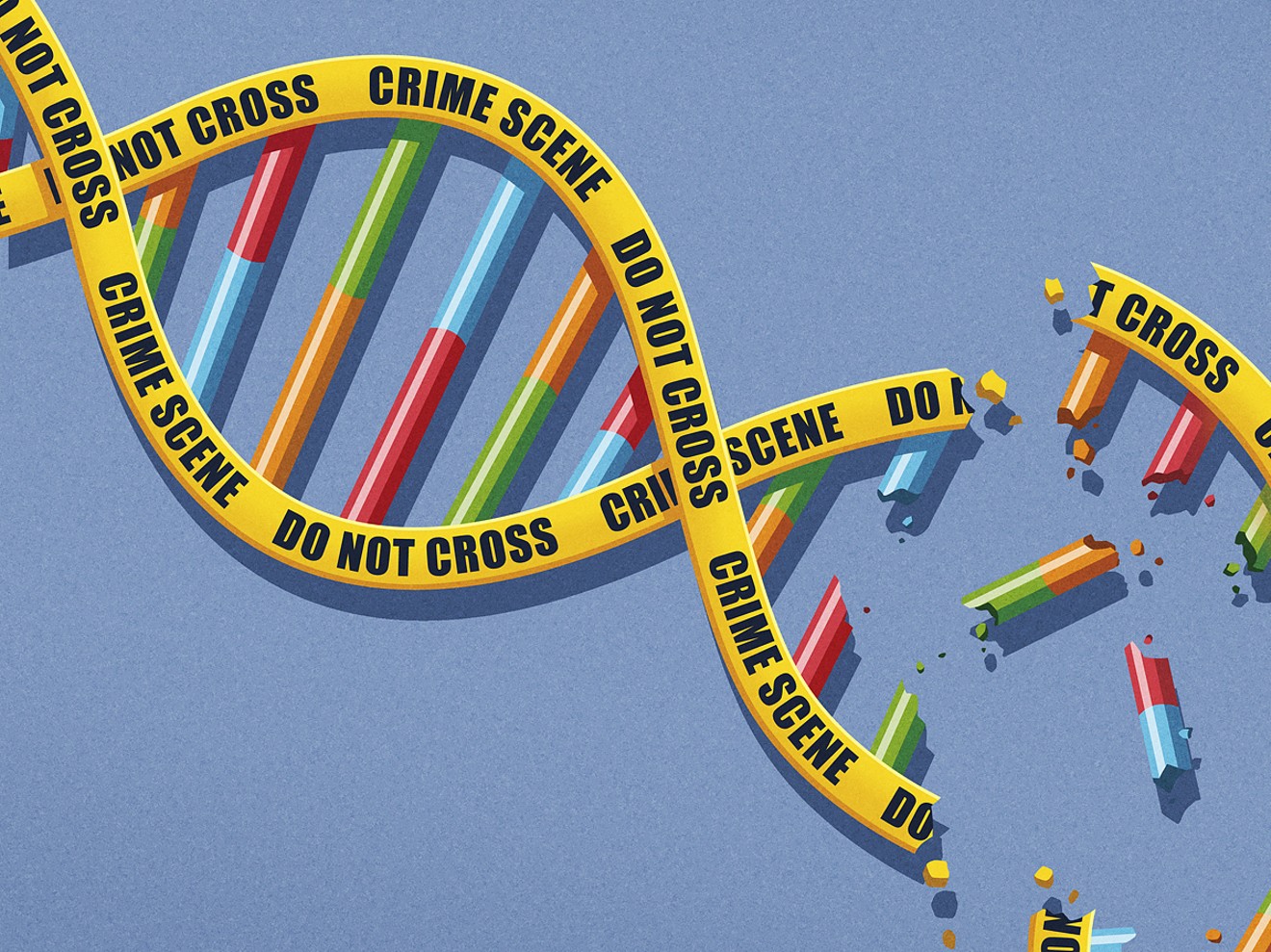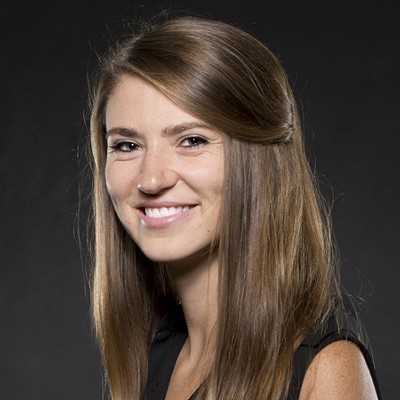The shots rang out before either cop could reach for his holster. The only thing the two Broward Sheriff's deputies could do was call for help. "We're shot!" came a voice over police radio. Then it was quiet.
When the bullets stopped flying that November night, Dep. Corey Carbocci lay bleeding on the pavement. Dep. Brian Tephford hung halfway out of his patrol car. Their red, white, and blue police lights were still flashing across the sprawling condo complex where a routine traffic stop had suddenly turned violent.
A swarm of police and first responders sped to Versailles Gardens, a cluster of buildings off McNab Road in the suburb of Tamarac. Screams came from the crowd that had formed near the deputies. Carbocci, 37, clutched his chest and leg as paramedics assessed his wounds. But Tephford wasn't moving. The 34-year-old father of three was soon pronounced dead.
Three suspected gunmen — Eloyn Ingraham, Bernard Forbes, and Andre Delancy — were caught the day after the November 11, 2006 attack, holed up in a room at a Dania Beach inn with two Glocks in the toilet tank and a Springfield Arms pistol under a bed. Prosecutors said ballistics, cellphone data, eyewitness accounts, and DNA evidence all linked the men to the crime.
But more than a decade later, as the three finally inch toward trial, some of that DNA evidence — including from one of the guns — is under fire. After weeks of arguments, a judge has yet to decide whether the evidence can even be shown to jurors. The stakes couldn't be higher, with Ingraham, Forbes, and Delancy all potentially facing death sentences.
The trio's prosecution is actually just the most high-profile of hundreds — perhaps thousands — of serious criminal cases thrown into doubt in Broward County thanks to problems with DNA evidence, supposedly the most reliable of scientific bases for prosecution.
Two linked issues are driving the ongoing saga. The first came to light last summer, when an investigation found problems with how the Broward Sheriff's Office crime laboratory was interpreting complex samples, which contain DNA from more than one person. With its accreditation threatened, the lab last July ceased reporting those complex samples and instead began sending them to outside experts.
BSO lab officials downplay concerns, insisting their methods have repeatedly been validated and their analyses and protocols are sound. The lab's methods would "never produce a false identification," says Col. Steve Kinsey of the Broward Sheriff's Office.
"The more you dig into it, you recognize how much gray area is involved."
tweet this
But then, in December, South Florida's most prominent DNA expert, Martin Tracey, was suspended from his teaching job at Florida International University amid accusations of racism and sexism. Tracey, who has performed statistical calculations and testified for prosecutors in thousands of cases since the early '90s, has filed a lawsuit against the university and says he's being railroaded.
"Dr. Tracey's expertise in DNA has nothing to do with what has happened [at FIU]," says his attorney, Jordan Richards. "It doesn't have any bearing on whether he can or cannot testify."
Yet the allegations against Tracey have only added fuel to the crime lab controversy, which had already forced prosecutors to tell defendants in about 2,000 closed cases that their convictions might have been affected by bad evidence. Defense attorneys say Tracey's university suspension could open up even more room to challenge DNA-based results.
Taken as a whole, the fight over DNA evidence in Broward is a microcosm of a brewing national fight over a science often thought to be unimpeachable, which critics say has been stretched beyond its scientific abilities by overzealous prosecutors and confused jurors — potentially leading to wrongful convictions.
"Everyone thinks DNA is so important," says Broward Chief Assistant Public Defender Gordon Weekes, "but the more you dig into it, you recognize how much gray area is involved."
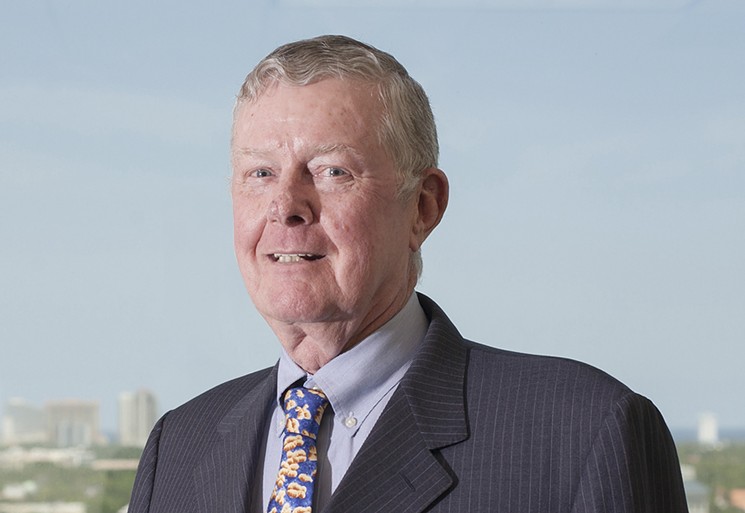
Martin Tracey was a little more than a decade into his teaching career when one of his former students suggested he try his hand at testifying in trials. Kevin McElfresh had become a geneticist after graduating from FIU. Now he was constantly flying around the country as an expert witness.
"He was in Miami one time, and he said to me: 'Why don't I give your name to these attorneys and you could go to court, and I could stay home with my kids once in a while?'?" Tracey recalls today.
Six months later, he got a call from prosecutors in Georgia who were preparing to try a murder case. The last thing they asked Tracey was how much he charged. He hung up with them and immediately called McElfresh: "You didn't tell me I'd get paid for this!"
From that humble start, Tracey would rise to become a leading authority on DNA evidence, testifying in countless cases across 30 states. In his South Florida home base, he would become integral to the use of DNA in courtrooms by explaining to jurors the statistical significance of the often-complicated evidence. Outside the courtroom, he advised the Broward crime lab how to analyze the thousands of cases that came its way.
The son of a physician, Tracey grew up interested in science but knew he didn't want to get into medicine. He saw the toll it took on his dad when a patient didn't make it. So after getting his PhD in biology at Brown University in 1971, he fell into teaching.
"And within two weeks," he says, "I discovered that I really liked it."
Tracey's first teaching gig was in his home state of Massachusetts, but in 1977, FIU came calling. He had never heard of the school but was sold on moving to Miami. With his down-to-earth personality and story-filled teaching style, Professor Tracey soon made an impression on students at the new university.
"He could make the most boring subject interesting, and that was his gift as a professor," recalls Vincent Forzano, who attended FIU in the '80s and now works as a physical therapist in Pompano Beach. "We all loved him. I mean, there wasn't a student I knew who didn't love him as a teacher."
Around the same time Forzano was sitting in Tracey's classroom, DNA analysis was being pioneered on the other side of the Atlantic. A University of Leicester researcher named Alec Jeffreys studied the x-ray film image from a failed DNA experiment and realized that the pattern of lines and blobs in the sample was unique to the individual. In what he later called a "eureka moment," he realized that people could be identified by their DNA.
"The analysis is done in tiny little test tubes, and you never see anything."
tweet this
The discovery was transformative. DNA analysis would quickly revolutionize crime scene investigations, giving police and prosecutors a previously unimaginable tool for connecting people to crime scenes. The tool could crack cold cases and also help exonerate hundreds wrongly convicted.
In the United States, a Florida man named Tommy Lee Andrews became the first person convicted using DNA as evidence. Jurors in 1987 found him guilty of breaking into the home of an Orlando woman and raping her. The verdict shocked Andrews, who later told the TV station WESH 2 he thought there was no chance the strange new technology would convince jurors.
"When they brought this to me," he said, "I'm like, 'Hey, man, that look like a bunch of dots.'?"
To translate those "dots" into evidence juries could comprehend, prosecutors called geneticists to the stand, where they would explain the likelihood that someone other than the defendant might match the DNA. Those experts would explain the chance of randomly selecting someone off the street who could also match the evidence, with numbers like one in 500,000 or one in 235 million.
That was Tracey's job. He performed calculations and testified in so many cases that he lost track, pouring most of the proceeds into his lab at FIU. Though he once helped exonerate a man convicted of sexual assault, he worked almost exclusively for prosecutors. Tracey took the stand to explain DNA in countless sexual assault and murder cases. In one that still stands out to him, tests showed all the blood at the scene came from the victim — except for a tiny spot inside his wallet, which matched a suspect.
"Every once in a while, these crime scene people are just so insightful," Tracey says.
Tracey cut a unique figure in court: He always wore cowboy boots, a wardrobe staple he'd adopted as a teenager after using money from his first job to buy a pair, mostly to annoy his father. As the years passed, he never stopped wearing them. For court appearances, he'd pull on a pair embroidered with double helixes of DNA.
In the early days, juries were sometimes hesitant to convict based on the new science — the O.J. Simpson case is one famous example — but that wariness soon vanished. By the mid-2000s, the legal community was abuzz about the so-called CSI effect, in which jurors accustomed to high-tech TV-show investigations both completely trusted DNA and expected to see it in just about every kind of case.
Meanwhile, DNA analysis was advancing rapidly in crime laboratories, where analysts were using smaller and smaller quantities of DNA to connect people to crimes. When the science was in its infancy, it took a sample of bodily fluid half the size of a quarter to conduct a test. Today analysts can get usable results by swiping a kitchen counter or steering wheel for minuscule clusters of cells.
"It amazes me — the laboratories now try to run one nanogram of DNA," Tracey says. "The analysis is done in tiny little test tubes, and you never see anything."
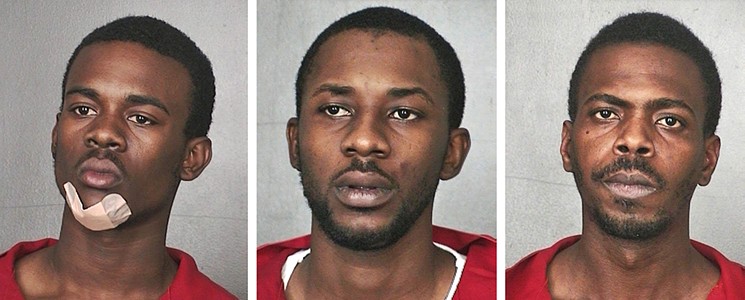
Peering at a report about DNA collected off a bandanna found at a murder scene, Tiffany Roy noticed a big problem: The Broward crime lab had concluded the accused murderer, Jovon Gibson, could have contributed to the tangled mix of DNA from multiple people. The lab then sent its results off to Tracey, who calculated that the DNA was 25 times likelier to have come from Gibson than someone else, and readied himself to testify in the murder trial.
But Roy, a DNA consultant hired by the defense in January 2016 to review the data, realized there was so much information missing from the sample that it never should have been used. The lab's own rules mandated that it should have been ruled inconclusive. What's more, an independent lab later retested the results and came to the same conclusion.
"It was like an aha moment," says Roy, who lives in West Palm Beach. "They're trying to dress up something that has very little value and is very nondescript and trying to make it seem like it's descriptive because it's consistent with their guy. But it would be consistent with many others."
The Gibson case wasn't Roy's first hint that Broward County was interpreting DNA incorrectly. In fact, three months earlier, she had reported the county's lab to the national organization that accredits it, the American Society of Crime Laboratory Directors (ASCLD). Her complaint triggered an investigation that ended with the lab in danger of losing its accreditation and thousands of serious criminal cases in question.
At the heart of the issue is the tricky science behind analyzing complex DNA samples — a problem that's far from unique to Broward. As questions are raised about the use and reliability of complex DNA evidence, labs across the nation are facing a reckoning over the science many see as ironclad. In several cities, analysts are now reexamining old cases where the significance of DNA evidence could have been miscalculated.
"Even a reliable scientific discipline can... fall prey to ordinary error."
tweet this
DNA analysis has often been held up as a model for other forensic disciplines. Though methods such as bite-mark, hair, and fingerprint analysis have been subject to greater scrutiny — and in the case of bite marks, largely discredited — DNA testing has mostly kept up its reputation as beyond reproach. The problem is, it's not always that simple.
"Even a reliable scientific discipline can be pushed beyond its limits, corrupted, or fall prey to ordinary error," New York University School of Law professor Erin Murphy wrote in her 2015 book, Inside the Cell: The Dark Side of Forensic DNA.
As technology has rapidly advanced to allow analysis of ever-tinier and more complicated samples, that possibility has increased. Until the early 2000s, labs processed crime scene blood or other bodily fluids that contained DNA from one person. That DNA profile would be compared to a swab from a suspect, and the two could be matched with 100 percent certainty, irrefutably linking the suspect to the crime.
Because labs today can extract usable DNA from much smaller samples — "touch DNA," for instance, requires just a handful of skin cells — the work of a forensic analyst has become much less clear-cut. Analysts can look at samples containing DNA from multiple people and try to determine which portion belongs to which person. When the amount of DNA is minuscule or degraded, pieces can be missing or seem to exist where they do not.
With so much up to interpretation, a supposedly objective science has become more subjective. In fact, when researchers at University College London asked 17 examiners to compare a mixed DNA sample from a sexual assault to DNA from three suspects, their conclusions were all over the board. The 2011 study also showed that most of the experts disagreed with the conclusions of the lab that analyzed the evidence for the criminal case.
There are real-life consequences to the problems with complex DNA. Josiah Sutton, a Texas teenager, was convicted in 1999 of rape based on such evidence and spent four years behind bars before an independent reanalysis determined a convicted sexual offender was the true culprit.
"The public views it as the gold standard, and as a result it's very difficult for the accused to point out the flaws in the testing and reporting of DNA results," says Weekes, Broward's assistant public defender. "Everyone believes that DNA is infallible."
Recognizing the need to standardize complex DNA tests, the accrediting organization ASCLD put labs on notice with new guidelines in 2010 and 2011. They set thresholds for interpreting DNA and stating its reliability in court; previous methods had given experts like Tracey wide leeway to potentially overstate the significance of their findings. It didn't take long for violators to be discovered, sometimes with dramatic consequences: In two high-profile incidents, DNA-processing labs in D.C. and Austin were shut down for months after problems were discovered.
(Miami-Dade's crime lab updated its procedures in April 2015, and that lab and the one in Palm Beach County continue to perform analyses of complex DNA today. Roy says she's been contacted about a few cases in each county involving calculations by the experts from FIU.)
The Austin and D.C. cases were on Roy's mind in August 2015 when she reviewed DNA evidence from a knife handle and realized the Broward crime lab had mistakenly called it conclusive, in violation of ASCLD's rules. Roy emailed the directors of ASCLD about that issue and another she had noted: Analysts seemed to be skewing the process by using samples from suspects to determine which portions of DNA evidence to analyze.
"I'm certain a great many cases have been affected by this," she wrote to the group.
Tracey's work was central to her concerns because he had reviewed the DNA from the knife. But he was quick to defend his work and the lab. In a letter to its director, he and other FIU professors who served as crime lab consultants wrote that its protocols were carefully designed and validated. They added that Roy's allegations were baseless and, because she was working for the defense, suspect.
"It appears to us that the allegations are an overt act by the defense to invalidate years of consistent and quality work," said the December 2015 letter signed by FIU's Tracey, McElfresh, and Bruce McCord, each of whom had served as a consultant to the lab. "We wonder if you have considered the storm that will erupt should this tactic succeed."
But in April 2016, ASCLD agreed with Roy. A June appeal by the Broward crime lab yielded the same results. By July, the lab was still standing by its methods but agreed to stop processing complex DNA. The State Attorney's Office soon began sending notices to defendants in each case since 1999 that involved complex DNA evidence.
"We want to make sure that there's been reliable evidence against any defendant, and that's why we did take these steps," Chief Assistant State Attorney Jeff Marcus says. "And if it is significant, it will be addressed."
Gibson's case was the first in which DNA evidence was tossed out due to the crime lab issue, according to his attorney, Monique Brochu. Though the connection between Gibson and the bandanna DNA was weak to begin with, Brochu worried jurors might not understand that.
"My fear was any jury that hears the word DNA is going to go, 'Oh! There it is. He's gone,'?" she says. "That's what [prosecutors] are banking on: Once you say the word DNA and do a little explanation, they'll convict."
But after the second analysis confirmed the DNA was inconclusive, Brochu says, the state agreed not to use it and offered a plea deal of ten years behind bars. Gibson, who had always proclaimed his innocence in the murder, reluctantly accepted. Instead of going to trial and risking a life sentence, he could be out in two years with credit for the time he had spent in jail awaiting trial.
Roy doesn't exactly see that result as a happy ending.
"When you think about it, he didn't go to jail for life and they didn't try to execute him, but is that a win?" she asks. "He sat in jail for six or seven years, and this DNA was bad the whole time."
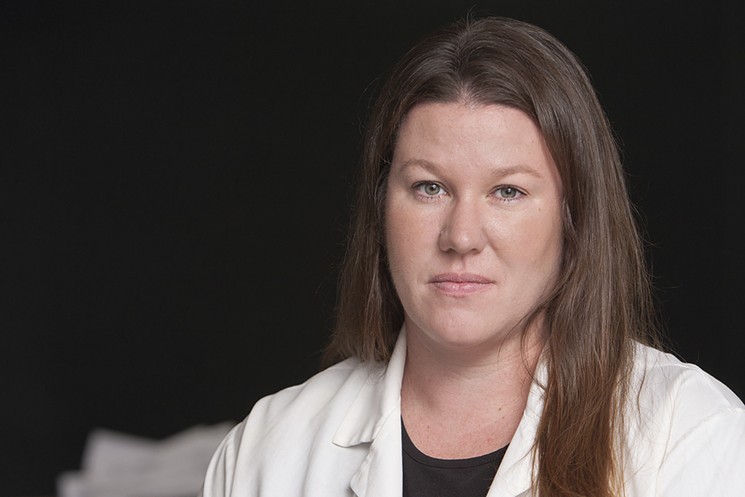
At a faculty gathering at his house, FIU President Mark Rosenberg turned to Tracey. "Marty, you're the oldest one here," Tracey remembers him saying as the other professors gathered around with their glasses of wine. "You get the last word."
Ever the storyteller, Tracey launched into an off-the-cuff speech about how FIU wasn't perfect, but he'd been there 35 years, and you don't stick around that long unless it's a pretty good gig. In fact, he added, he intended to die on campus, where some poor student would discover his body. Then he wanted his corpse donated to the university's medical school for research.
"First of all, organ donation is a good idea," Tracey responded when Rosenberg asked why. "And second of all, the people who don't like me would say, 'Damn! He's dead and he's still on campus.'?"
Instead, just a few years later, the longtime professor would find himself locked out of his office and barred from speaking to students amid a school investigation. Then, months ago, FIU officials informed Tracey that they planned to fire him after he was accused of racist and sexist conduct toward students.
The news blindsided the biologist, who denies wrongdoing and is now suing the school to get his job back. But he says he quickly realized what the university's ruling would mean for his nearly 30-year side gig as an expert witness: At the Broward courthouse, where Tracey was set to testify in more than 170 pending cases, defense attorneys have called his credibility into question and required disclosure to juries.
"They need to have a full picture of whether there are outside influences that might cause him to be biased," Weekes says.
The longtime professor's clash with FIU began last summer, when a couple of his genetics students told him their classmates were in a WhatsApp chatroom bragging about helping one another through an exam. The 75-year-old scientist says he didn't even know what a chatroom was. He had to ask his teenage daughter about it. To catch the cheaters, Tracey asked McElfresh to sign up on the app and take screenshots during a later exam. McElfresh found students were brazen: Some took pictures of their Scantron forms and posted them for the others to see. Then they argued over whose answers were correct.
Tracey spent three weekends tracking the cheaters' phone numbers before announcing in an email to his class that he had given F's to 21 students and was still identifying others from the chat. "If you were cheating, you can't relax," he wrote.
But the students didn't go quietly. They insisted that because Tracey allowed phones and computers during testing, they couldn't have known group chats were forbidden — even though he'd told them they couldn't consult one another during tests. In a heated moment outside his office, Tracey told the student he believed to be the ringleader that he was "a little cheat" and "being a jackass."
The alleged cheaters filed a complaint against Tracey with the provost's office, and the university opened an investigation that soon mushroomed far beyond the academic issue. Some students alleged Tracey made sexist jokes, such as commenting, "I don't know why you all want to go to medical school. Look at me — I have beautiful women coming to my office all the time."
Others claimed he said he should hate Cubans because his ex-wife was Cuban. Those allegations triggered a separate investigation by the school's equal opportunity office, which concluded last year that the professor "frequently made offensive comments and jokes pertaining to sex and nationality," violating university policy.
That finding baffled Tracey, who as chairman of the biology department in the '80s won a grant to launch a program for minority students. "I can't recall ever having offended anybody," he says.
Several of his former students said they, too, were surprised to hear the charges being leveled. "I think it's a little laughable," says David Serrano, a recent FIU graduate who points out that he himself is Hispanic. "I really don't know where that would come from besides disgruntled students."
The school says it was particularly concerned by Tracey's regular comments about drones. On exam nights, Tracey would often send emails about drones going to students' homes to make sure they were in bed by 10 p.m. "The new drones will take an almost unnoticeable skin biopsy which will give me enough of your skin to place at the crime scene of my choice," he wrote on one occasion. Tracey says the drones are a running joke aimed at encouraging students to get enough sleep.
"If I forget, people start around 10:30 posting emails: 'OK, where are the drones? What happened to the drones?'?" he says, adding that one year, students even bought him a drone. But FIU officials found the references inappropriate in light of "our current global climate" and said because of the diversity of the university, the jokes "could negatively impact a student's psyche and ability to study."
He's already being knocked off cases as an expert witness.
tweet this
One email Tracey sent actually prompted FIU cops to go to his house. He had written that university police would be ensuring students were asleep the night before their exam, so if they saw a Justin Bieber look-alike peering into the window, "shoot him for practice, because pretty soon folks will be carrying guns on campus." He signed off with, "You want a shootout over grades? Name the time and place, punk. You'll make my semester."
Tracey says the email was meant to refer to the Legislature's then-ongoing debate about allowing guns on campuses. "They were saying, 'Did you really tell students to shoot FIU police officers?'" Tracey says of the three officers who interviewed him. "Give me a break."
University officials didn't get the jokes either. By the end of last summer, they had reversed Tracey's failing grades for the students accused of cheating. They suspended him for the fall semester and said in January that he didn't meet the requirements to return to teaching. Most recently, they told him they planned to fire him.
Tracey is fighting back in court. In April, he filed a civil lawsuit in Broward County alleging the school violated his due process rights.
But in the meantime, he's already being knocked off cases as an expert witness. According to an estimate from his lawsuit, he's lost $20,000 in fees as prosecutors turn to McElfresh instead.
In cases where Tracey is being allowed to testify, defense attorneys have sought to question him on the stand about the accusations from FIU, arguing they might be relevant to the way he calculates the statistical significance of DNA.
Prosecutors declined to comment directly on whether they believe FIU's findings challenge Tracey's credibility. But Chief Assistant State Attorney Jeff Marcus pointed to a ruling in the police-shooting case, in which the judge refused to allow defense attorneys to introduce the FIU investigation or to question Tracey about his alleged racial biases.
"The defense is trying to portray Dr. Tracey as a racist when in fact no racial bias has been substantiated," Judge Paul Backman wrote in the order.
But the judge did add one note: His decision would have been different, he said, if the defendants were Cuban.
Wearing black boots and a tie with a chromosome print, Tracey sat in the front row of the courtroom gallery as Roy took the stand. "Not Right," she had titled a PowerPoint slide detailing the way Tracey, McElfresh, and others associated with the Broward crime lab had compared DNA from evidence to swabs from defendants. Over hours of testimony at the downtown Fort Lauderdale courthouse in May, Roy claimed a "seemingly inconsequential step" could completely change the meaning of the evidence.
"When I see these kinds of things that are not acceptable today trying to be introduced into a court of law — knowing what we know now — that's not acceptable to me," she said while accused police killers Ingraham, Delancy, and Forbes, all dressed in red jail jumpsuits, looked on.
Cases such as the ongoing cop-killing trial are testing the foundations and reach of complex DNA analysis and, at the same time, Tracey's life's work. It remains to be seen how significant an effect the crime lab's alleged problems or Tracey's battle with FIU actually have on criminal cases.
So far, the Broward crime lab has not resumed work on complex DNA samples. A spokeswoman for the sheriff's office says the lab is "in the final stages" of implementing a new software program, which Roy says should help eliminate human error.
But Roy and some defense attorneys also accuse the lab of misleading the public by downplaying the issue, and say prosecutors are not doing enough to ensure the DNA from past and pending cases is sound. The evidence should all be retested, they say, as was done in D.C. and Austin. In Austin, city officials called the situation a "crisis" and ultimately handed DNA lab operations over to the state after the facility was closed for nearly a year.
"People are getting convicted on things that should never have even been in the courtroom."
tweet this
Brochu, for her part, is convinced that bad DNA evidence could have played into past convictions in South Florida. "Here people are getting convicted on things that should never have even been in the courtroom," she says. "That's horrifying to me. And then to try to continue to sweep it under the rug, that's what's most damning."
After the State Attorney's Office notified defendants about the DNA issues, the Public Defender's Office followed up with fill-in-the-blank motions that can be used to challenge convictions. There's a two-year deadline to start that process. The State Attorney's Office says that, so far, it's aware of six defendants who want their cases reviewed.
"Could it result in a change on individual cases? It could," says Marcus, the chief assistant state attorney. "We haven't seen it happen yet, but it certainly could. That's why we gave the notice."
Tracey's lawsuit against FIU is in its early stages; it was recently moved to federal court. The university has not yet filed a response. Almost a year after the school began its investigation, Tracey is still reeling from the fallout.
"It's embarrassing to have my credibility questioned, but mostly it's anger and befuddlement as to why the university would do what they've done," he says. "And I don't really have a good explanation for it."
Whether he or McElfresh will be allowed to testify in the case against Ingraham, Forbes, and Delancy is up to Judge Backman after lawyers argued the issue over two weeks of hearings. Hilliard Moldof, a lawyer representing Forbes, says the two FIU scientists did not correctly calculate the likelihood that some DNA in the case matched his client. Prosecutors argue the evidence is sound. Because DNA evidence can be presented only if an expert attests to the probability that it matches a defendant, the ruling on whether Tracey can testify could determine whether jurors see the questioned DNA at all.
In the meantime, Roy has been contacted about DNA evidence in about a dozen other local cases. Sometimes she hears directly from inmates or their families.
Her experience over the past two years has left her feeling disillusioned with DNA evidence. She says the chance that someone could be wrongfully convicted based on bad science is now constantly in the back of her mind, so she doesn't dismiss anyone.
"I try to reach out to people and tell them what they need to do, because you just don't know," she says. "And I would hate to be the one to let that slip through my fingers."

